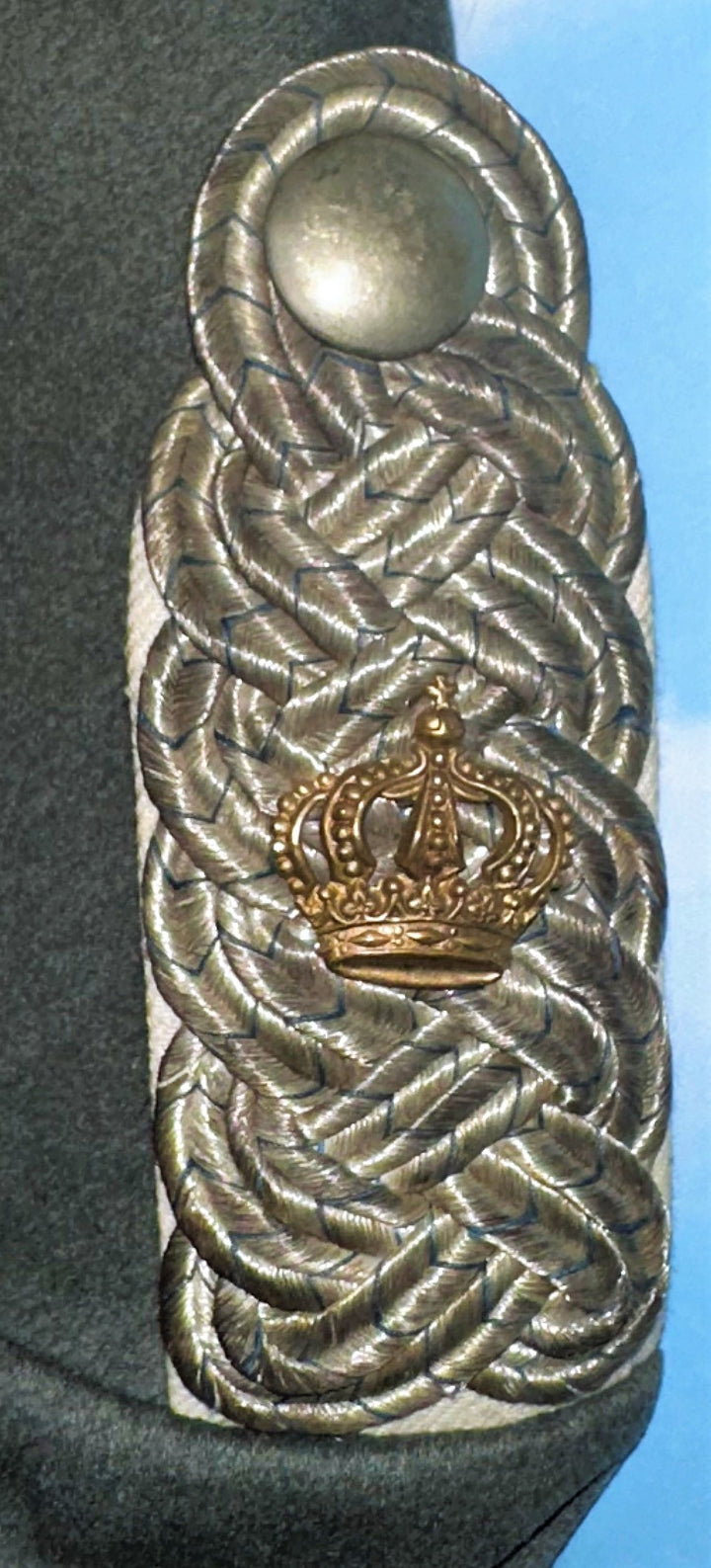Bavaria - Prinz Heinrich Friedensrock Infanterie-Leib-Regiment Major Tunic
- Regular price
- $11,995.00
- Sale price
- $11,995.00
- Regular price
SKU: 15-801
Step into the captivating history of Prinz Heinrich of Bavaria with this remarkable Friedensrock Infanterie-Leib-Regiment Major Tunic. Prinz Heinrich (1884-1916) possessed a fascinating story, having been tutored by a man named Himmler in his youth, who later sought permission to name his son after the young prince. Thus, Heinrich Himmler, of WW II "fame," came to be.
Crafted from high-quality feldgrau, the tunic bears the name "Friedensrock," representing the intended peace-time uniform of the German army after their victory. As such, it represents the final version and the most elegant rendition of the feldgrau uniforms.
This tunic belonged to a Major in the Leib-Infanterie-Regiment, the esteemed "King's Own" regiment of the Bavarian army. Prinz Heinrich served in this prestigious regiment before being later assigned to a cavalry regiment. During World War I, he was transferred to the III. Bataillone of the Deutsches-Alpenkorps in June 1915 and was promoted to Major. This became his final posting, yet he remained forever associated with the Leib-Infanterie-Regiment, even in death. Tragically, he was killed in 1916 while personally scouting Romanian positions, falling victim to a soldier from Romania. His body was brought back to Munich, where he was laid to rest beside his father. Prinz Heinrich was honored with the 1914 Iron Cross 1st and 2nd Class during the war. Following his demise on March 6, 1917, he was posthumously awarded the Military Max Joseph Order, Bavaria's highest military decoration. For non-noble and royal officers receiving this honor, it also included a knighthood. An exemplary case is that of Eduard Ritter (Knight) von Schleich, a thirty-five victory ace, who, although formally assigned to the Deutsches Alpenkorps, maintained his affiliation with the Leib-Infanterie-Regiment. This tunic represents Prinz Heinrich's final connection to the regiment, perhaps as an a la suite officer, particularly considering his official assignment to the Deutsches Alpenkorps at the time of his passing.
As previously mentioned, this feldgrau tunic exudes elegance. The collar boasts intricate silver bullion embroidery, continuing down the sleeves, where twin silver bullion lines feature a silver button on each. Additionally, there is a row of eight silver buttons adorning the tunic's center. The shoulder boards indicate the rank of a Major, each adorned with a Bavarian crown, symbolizing the elite status of Bavarian infantry regiments. These shoulder boards are exceptionally rare, particularly in this rank, and would be highly sought-after by collectors. On the left breast of the tunic, you will find the 1914 Iron Cross 1st Class, a symbol of Prinz Heinrich's valor.
Inside the tunic, a tailor label from the House tailor in Munich bears Prinz Heinrich's name and notes that the tunic was given to him in May 1916, just a few months prior to his untimely death. It is highly unlikely that he wore this tunic more than once during a visit to Munich.
This rare and historically significant tunic is a must-have for any collector of German military history.
- Worn by Prinz Heinrich of Bavaria, a royal prince and decorated officer
- From the prestigious Infanterie-Leib-Regiment, the "King's Own" regiment of the Bavarian army
- Meticulously crafted from high-quality feldgrau
- Features intricate silver bullion embroidery, shoulder boards with Bavarian crowns, and the 1914 Iron Cross 1st Class
- In excellent condition, with only minor wear and tear
- Prinz Heinrich of Bavaria was a royal prince and decorated officer in the Bavarian army.
- He served in the prestigious Infanterie-Leib-Regiment, the "King's Own" regiment of the Bavarian army.
- He was awarded the 1914 Iron Cross 1st Class for his valor in battle.
- He was killed in action in 1916.
- This tunic is a rare and historically significant piece of his legacy.





















